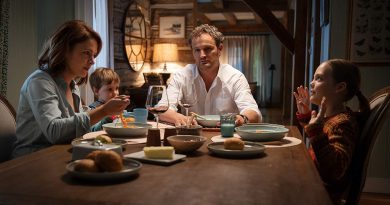Examining The World Of Wes Anderson
Critics call him pretentious. Fans call him a visionary. Whether you love him or hate him, there is one thing cinephiles can agree on: Wes Anderson is a master of aesthetics.
Since his debut in the late 1990s, Wes Anderson has been a staple of American cinema. Some of his most successful works include The Royal Tenenbaums, Moonrise Kingdom and The Grand Budapest Hotel. He has also dabbled in animation with Fantastic Mr. Fox and Isle of Dog.
Best described as nostalgic or quirky, Wes Anderson films usually have a few distinct qualities.
Humanity
Fiction is an outlet that allows us to explore what it means to be human. Often comedy is used to lighten the mood, all while maintaining enough drama to discuss topics like grief, sexuality, or complex family dynamics.
His characters are outcasts most of the time with dysfunctional families. They make unlikely friends and go on wacky adventures.
The world of Wes Anderson is character driven, making his movies feel like novels. Whether it is about coming of age, a group of animals, or mysterious crimeーAnderson never fails at making his characters feel human.
Pastel Symmetry
The attention to detail is there—no paper is out of stack and every table is perfectly straight and subjects are center frame.
Title cards introduce characters, eras or montages, guiding the audience without telling them too much. Characters go on long walks to showcase flawless backgrounds.
The colors are vibrant but not shocking due to a limited color palette. That is done to add to the visual world building within. Handmade miniatures and stop motion show the human attention to detail and evoke a cozy sensation with the audience.
Nostalgia
Channeling the late 20th century in his style, chances are a Wes Anderson character uses a record player before opening Spotify.
Once again proportions come to play through the wardrobe. Eclectic patterns and choices show the quirks of the cast of characters and probably inspire the closets of pretentious art students everywhere. A fur coat with a tennis dress and loafers or a fun 60s style mini skirt with a sweater vest shows how much we like to mash together eras and styles in fashion. Topped off with some 90s grunge eyeliner rather than confining to a decade, Anderson costuming mashes together highlights of the era.
Music also seems to be trapped in the ‘60s and ‘70s. Minus The Grand Budapest, which uses original music by Alexandre Desplat, ‘60s/’70s pop dominates the screen.
Wes Anderson celebrates the eccentric and odd in a world created to feel like a bizarre reflection of our own. Beneath the aesthetic, there is a charm that has caused him to become one of today’s most influential directors.




